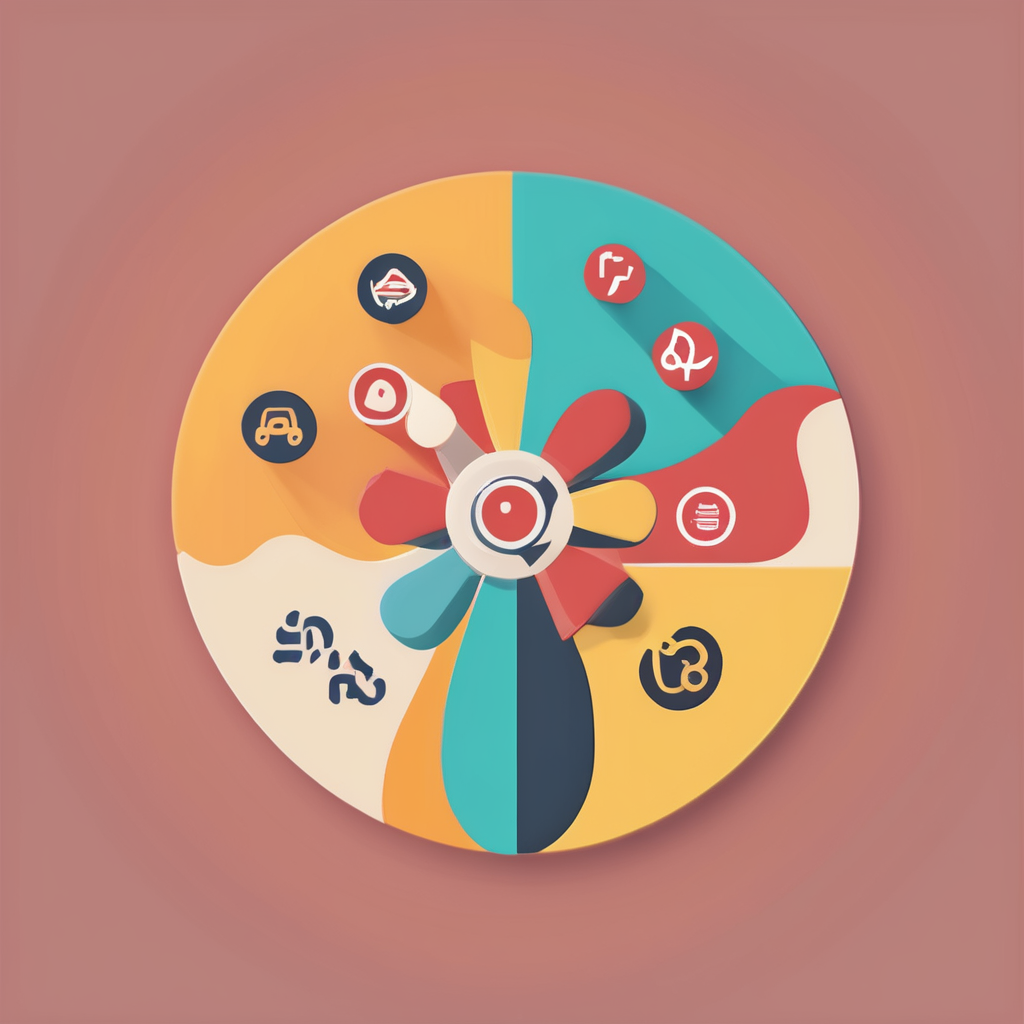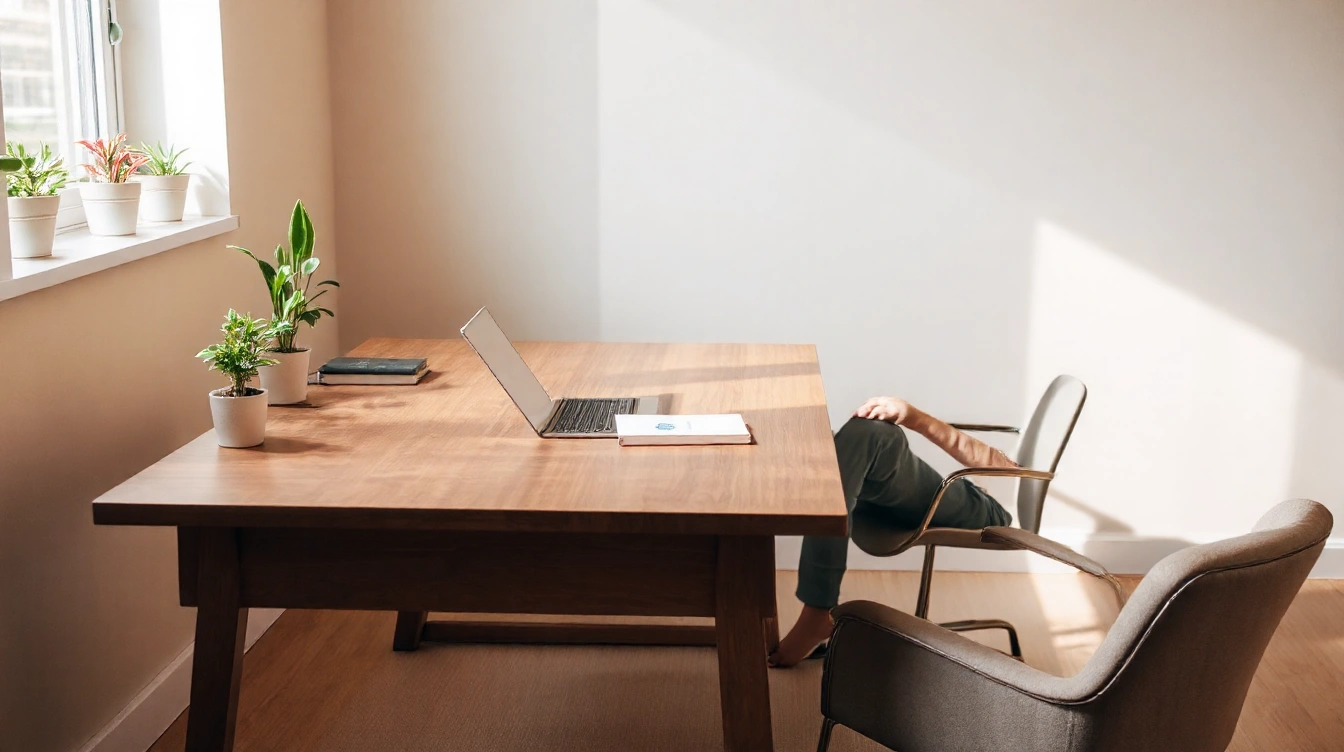Effectively managing anxiety demands more than a single solution; it requires a toolkit tailored to diverse needs and situations. This compilation ranks top anxiety management tools based on proven effectiveness, accessibility, and scientific support. Whether you prefer digital apps, tactile aids, or professional guidance, these resources offer practical strategies to help you regain control and find calm amidst daily pressures.
Top 10 Tools for Effective Anxiety Management Strategies: Ranked and Reviewed
Understanding the critical role that anxiety management tools play in mental health is paramount. Different individuals require diverse approaches, so exploring a variety of anxiety relief strategies enhances the likelihood of finding effective support. The ranking of the top 10 tools is based on stringent criteria emphasizing effectiveness, accessibility, and grounding in scientific research, ensuring users access the most reliable and user-friendly options.
This might interest you : Effective techniques to motivate inactive adults to adopt a healthier, active lifestyle
To evaluate the best anxiety resources, we focused on evidence-based results from clinical studies, user feedback, and ease of integration into daily life. This holistic approach allows for capturing tools that provide real-world benefits, from relaxation techniques to cognitive behavioral therapies and digital apps. Our selection includes the best anxiety apps as well as physical aids and online programs that have consistently demonstrated positive outcomes in reducing anxiety symptoms.
For quick reference, here is a summary of the most effective anxiety management tools integrated with proven anxiety reduction resources for practical daily use. This fast-access comparison helps individuals and practitioners alike discern which solutions fit specific needs and preferences:
Have you seen this : Conquering anxiety: proven tips to prevent panic attacks
- Evidence-based approaches rooted in clinically tested methods.
- User-friendly interfaces ensuring accessibility for all age groups.
- Multi-faceted tools covering both immediate relief and long-term coping skills.
Discover the full content to dive deeper into each tool’s unique advantages and based on your specific anxiety challenges, unlock personalized solutions within this comprehensive guide.
Digital Solutions: Top-Rated Anxiety Management Apps
Explore how best anxiety apps serve as effective tools for anxiety relief through digital platforms. These apps provide guided mental health support, combining self-monitoring features with professional techniques to foster emotional balance.
One question users often ask: What makes these anxiety relief digital tools effective? The key lies in their integration of evidence-based practices such as cognitive behavioral therapy (CBT), mindfulness exercises, and real-time mood tracking. By offering guided mental health apps with customizable routines and reminders, they empower users to manage symptoms proactively.
Many top apps excel through a user-friendly interface that supports on-the-go anxiety relief. Whether in moments of stress or scheduled practices, these apps adapt to personal needs. Customizable features include breathing exercises, mood journaling, and relaxation sounds, making them accessible anywhere.
The combination of self-monitoring and guided support in the best anxiety apps enhances accountability and fosters sustained progress. Users appreciate how these digital tools encourage daily engagement, crucial for anxiety management success. Ultimately, these apps provide a practical, discreet, and convenient approach that complements traditional therapies effectively.
Discover the full content for further insights into navigating anxiety with essential digital tools.
Self-Help Techniques: Cognitive and Mindfulness Approaches
Discover how self-help for anxiety can empower you through effective cognitive and mindfulness strategies. Cognitive behavioural strategies focus on identifying and challenging the unhelpful thought patterns that often fuel anxiety. For example, cognitive behavioural techniques encourage you to recognize irrational fears and reframe these into balanced, realistic perspectives. This approach is proven to reduce anxiety symptoms by breaking the cycle of negative thinking.
Mindfulness techniques, on the other hand, train your attention to stay present. Mindfulness exercises, such as focused breathing and body scans, help ease anxious thoughts by grounding you in the current moment rather than letting your mind spiral into worry. These practices increase your awareness without judgment, fostering a calmer mental state.
Incorporating self-help for anxiety into your daily routine can be straightforward and practical. Consistent practice of cognitive behavioural strategies alongside mindfulness techniques can build resilience against stress triggers. Consider setting aside a few minutes each day for mindfulness exercises, while also journaling to track and challenge anxious thoughts. Over time, these self-help methods integrate seamlessly, offering sustainable support for managing anxiety.
Discover the full content to explore a wide range of proven cognitive behavioural strategies and mindful exercises tailored to suit your lifestyle.
Physical Products: Sensory and Comfort Tools
Physical calming aids are essential anxiety relief products that engage the senses to help reduce stress and promote relaxation. Weighted blankets, for example, offer deep pressure stimulation, which can soothe the nervous system by mimicking the sensation of a comforting hug. This tactile input can significantly ease anxiety symptoms by releasing neurotransmitters such as serotonin.
Sensory tools for anxiety often include fidget toys, stress balls, and textured objects designed to redirect nervous energy and promote mindfulness. These sensory tools for anxiety encourage focus on the present moment, helping users to reduce feelings of overwhelm. Regular tactile engagement with these tools can improve emotional regulation and provide a portable option for on-the-go anxiety support.
To maximize the benefits of these anxiety relief products, proper maintenance is crucial. Weighted blankets should be cleaned according to manufacturer instructions to preserve fabric quality and safety. Fidget tools and other small items benefit from routine cleaning to prevent dirt buildup, which can affect their function. Effective usage involves consistent incorporation into daily routines, such as using a weighted blanket during rest periods or carrying a fidget tool during stressful situations. Discover the full content for a comprehensive guide on these physical calming aids and their role in anxiety management.
Recommended Reads: Books and Journals for Anxiety Management
When it comes to effective anxiety management, selecting the right resources is crucial. Several books for anxiety provide actionable advice, making them indispensable for anyone seeking practical strategies. For example, guided workbooks for anxiety guide users through exercises designed to reduce stress and develop coping mechanisms. These workbooks often include step-by-step plans that empower readers to actively engage with their symptoms.
In addition to workbooks, anxiety management journals serve as valuable tools for self-reflection and tracking progress. By consistently writing about feelings and triggers, individuals can identify patterns and monitor improvements over time. This approach enhances self-awareness and complements other treatments. Many anxiety management journals offer prompts tailored to explore specific thoughts, promoting deeper understanding and emotional balance.
Each recommended resource has unique strengths. Books for anxiety often combine scientific research with real-life examples, offering both credibility and relatability. Guided workbooks provide hands-on methods, turning theory into practice. Meanwhile, anxiety management journals foster mindfulness and ongoing evaluation. Together, they create a comprehensive support system that addresses various aspects of anxiety, encouraging sustained progress and long-term resilience.
Discover the full content.
Professional Support: Online Therapy and Helplines
Effective pathways to manage anxiety with expert help
When seeking professional anxiety support, online therapy for anxiety is a convenient and accessible option that has grown significantly. Platforms offering online therapy provide tailored approaches from licensed therapists, ensuring individuals receive guidance specific to their anxiety symptoms. These services often include video sessions, chat support, and structured treatment plans that align with clinical standards.
Mental health helplines serve as vital resources for immediate assistance. They are staffed by trained professionals or volunteers who can offer emotional support, crisis intervention, and referrals to additional care. These helplines operate around the clock, making them a critical tool for managing acute episodes or for those unsure of where to start their anxiety care journey.
When selecting professional support, consider your schedule flexibility, comfort with digital communication, and the types of therapies offered, such as cognitive-behavioral therapy (CBT) or mindfulness-based techniques. Combining online therapy for anxiety with mental health helplines creates a strong support network. This comprehensive approach can be particularly helpful for individuals who need steady ongoing therapy with the safety net of immediate, 24/7 access to helpline support.
Discover the full content if you wish to explore detailed guidance on integrating these professional resources effectively into your anxiety management plan.
Lifestyle Modifications and Routine Building Tools
Small but consistent lifestyle changes for anxiety can significantly reduce symptoms and improve well-being. Incorporating structured daily routines for anxiety helps create predictability that calms the mind. Key tools supporting this include regular exercise, balanced nutrition, and quality sleep. Exercise elevates endorphins, which act as natural mood lifters. Nutrient-rich diets stabilize blood sugar and support brain health, while adequate sleep allows the body and mind to recover from stress.
Using habit trackers or planners enhances consistency by visually mapping progress. Popular options like bullet journals or app-based trackers encourage accountability and motivation. These tools simplify the process of embedding anxiety-reducing practices into daily life, turning intentions into habits.
The science behind this approach confirms that lifestyle modifications influence the brain’s stress response. Predictable routines and healthy behaviors reduce cortisol levels, lessen nervous system overactivity, and improve emotional regulation. By combining tools for building routines with evidence-based lifestyle changes for anxiety, individuals can foster resilience and stability in their daily lives.
Discover the full content.
Relaxation Aids and Calming Resources
Explore effective methods to ease anxiety symptoms with targeted relaxation tools.
When managing anxiety, selecting the right relaxation tools for anxiety can significantly improve one’s sense of calm. Aromatherapy is a prime example of a simple yet powerful calming technique. Essential oils like lavender or chamomile can be diffused or applied topically to promote relaxation and reduce stress levels.
Another popular option includes portable sound machines. These devices produce soothing background noise such as white noise or nature sounds, which can distract the mind from anxious thoughts and create a peaceful environment. Their portability also makes them convenient for use in various settings—whether at home or on the go.
Incorporating these calming techniques into daily routines does not require extensive time or effort. For example, pairing a five-minute session of guided meditation with deep breathing exercises can amplify relaxation benefits. Guided meditation sessions often include verbal instructions that assist users in focusing their mind and releasing tension gradually.
To achieve the best results, consistency is key. Using relaxation tools regularly, ideally at the onset of anxiety symptoms, can prevent escalation. Start slowly and find a combination of techniques that suit personal preferences and lifestyles. For instance, combining aromatherapy with a short guided meditation before bedtime could enhance sleep quality and reduce nighttime anxiety.
Understanding how and when to use these relaxation tools for anxiety can empower individuals to take control over their mental well-being effectively. Discover more practical calming techniques and guidance to tailor your anxiety management approach. Discover the full content.
Community and Peer Support Networks
Explore the power of connection in managing anxiety
Connecting with others in anxiety support groups or mental health communities offers significant benefits. These networks provide a safe space where individuals can share their experiences, fostering understanding and reducing feelings of isolation. Peer support for anxiety allows members to learn coping strategies firsthand from those who truly understand the journey.
There are both digital and local group support options. Online forums and virtual meetups offer accessibility and privacy, ideal for those hesitant to attend in person. Conversely, local groups enable face-to-face interaction, which can deepen empathy and trust.
To find and join trustworthy support communities, begin by researching well-established organizations or platforms specializing in mental health. Look for groups with experienced facilitators and positive member feedback. Participating actively in such communities encourages a sense of belonging and resilience, crucial for anxiety reduction.
Discover the full content for more insights into effective anxiety management techniques.
Monitoring and Progress Tracking Solutions
Tracking your anxiety effectively requires choosing the right anxiety tracking tools that fit your lifestyle. Both digital apps and analogue mood journals serve as reliable aids in identifying patterns and triggers. Digital tools often provide automated logging and graphical summaries, making it easier to visualize fluctuations over time. Mood journals, on the other hand, offer a more personal and reflective space to note emotional states and circumstances.
Regular self-assessment and journaling become crucial components of progress monitoring for anxiety. By recording your feelings daily or weekly, you create a consistent record that highlights changes, improvements, or setbacks. This practice helps in recognizing early warning signs and reinforces awareness of your mental state. The more detailed your entries, the better you can understand your anxiety’s ebb and flow.
Interpreting the data you collect from anxiety tracking tools and mood journals requires mindfulness and a structured approach. Look for recurring triggers, times of day when anxiety peaks, and activities that reduce stress. These insights enable you to adjust your management plans thoughtfully. For example, if you notice heightened anxiety before certain events, planning relaxation techniques beforehand can be a practical strategy. Overall, combining progress monitoring for anxiety with actionable changes strengthens your ability to manage symptoms effectively.
To explore methods and tools that empower self-monitoring and support your anxiety journey, feel free to Discover the full content.
Quick Reference Guide: Choosing and Implementing Your Top Tools
When it comes to anxiety management implementation, selecting the right tools tailored to your personal needs is crucial for effective relief. Start by assessing your individual anxiety profile—consider the intensity, triggers, and symptoms you experience. This personalized approach ensures that the tools you choose address your unique situation. For example, cognitive-behavioral apps might be best for those needing structured support, while relaxation techniques may suit others seeking mindfulness.
Implementing these tools quickly and effectively helps establish habits that maintain anxiety relief. One key strategy is to integrate new practices into your daily routine at consistent times, which enhances habit formation. Start with small, manageable steps—for instance, a five-minute breathing exercise or a daily journaling prompt—to build confidence and momentum.
Combining resources can also enhance your anxiety management implementation. Using complementary tools, such as pairing guided meditation with cognitive exercises, provides a comprehensive anxiety relief approach. This multi-faceted strategy addresses anxiety from various angles, making relief more sustainable and personalized.
By focusing on informed tool selection tips and rapid, consistent use, you can create an anxiety management plan that fits your lifestyle and supports lasting well-being. Discover the full content for deeper insights into optimising your anxiety relief strategies.











